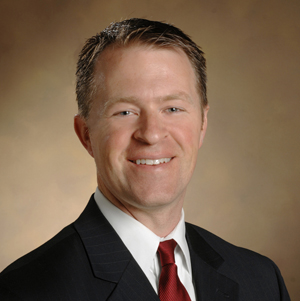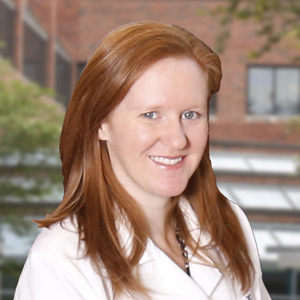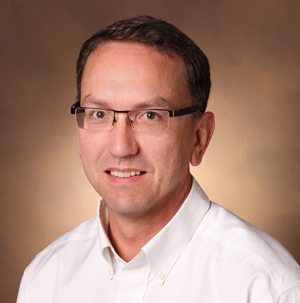When Gov. Bill Lee halted all elective, or scheduled rather than urgent, surgical procedures in Tennessee on March 19 in order to slow the spread of COVID-19 and conserve medical supplies and equipment, surgical and administrative leaders at Vanderbilt University Medical Center began seeking solid data to drive any future decision to safely restart these procedures.
A quickly assembled team of attending surgeons, surgical residents, research fellows and data analysts created complex decision analysis models that balanced the risk of COVID-19 infection against the risk of disease progression if surgical procedures were delayed during the pandemic.

When the team analyzed six specific disease-surgery pairs in relation to model patients, they determined that proceeding with surgery in hospitals with low perioperative COVID-19 infection rates rather than waiting three to six months would likely result in an improved five-year survival for the patients.
Eric Grogan, MD, MPH, is part of a national surgical society that made a recommendation early in the pandemic that surgeries for small lung nodules to diagnose cancer and resect the disease be halted until more was known about the transmission and prevalence of the virus. He soon began wondering if that was the best call because of the risk of undiagnosed lung cancer progressing during the time surgery was delayed.
“There is the risk of disease progression from lung cancer, and then you have the theoretical risk of COVID-19 and the risk of mortality if you got COVID-19,” he explained. “I knew at some point those lines would cross, and we would potentially be hurting people by delaying surgeries, but I didn’t know where that point was. We really needed to determine the COVID-19 infection rate at which immediate operative benefit exceeded risk.”

Grogan assembled a small team, including general surgery resident and research fellow Maren Shipe, MD, MPH, clinical epidemiologist Stephen Deppen, PhD, and Benjamin Kozower, MD, MPH, from Washington University in St. Louis. They created a decision analysis model using an “average case,” a 65-year-old male smoker with chronic obstructive pulmonary disease (COPD) who needed a surgical biopsy of a small lung nodule suspected of cancer.
They compared the survival benefit of immediate surgery to the impact of delaying the surgery for three months to a point when infections were assumed to be near zero. Shipe conducted an extensive medical literature search to define expected disease progression in the model patient and as well as mortality expectation as surgery continued to be delayed.

The model surprisingly demonstrated that the COVID-19 infection rate would need to be over 13% to justify delaying an operation for the model patient, a rate almost 10 times the infection rate in Tennessee at the time (1.4%).
“This study was important to do at the beginning of the pandemic when we were lacking the robust data on COVID-19 necessary to make evidence-based decisions with our patients about their surgical care,” said Shipe. “The modeling technique we used allowed us to apply existing data to a new situation to determine how to advise our patients, the hospital, and the community about when it may be safe to proceed with surgeries that, while not an emergency to perform, impact patients’ long-term health and survival.”
When they presented their findings to Seth Karp, MD, H. William Scott Jr. Professor and chair of the Section of Surgical Sciences, and other Medical Center leaders, they were asked to rapidly expand their modeling to include other disease-surgery pairs: breast cancer, ductal carcinoma in situ; early-stage esophageal cancer; aortic stenosis requiring transcatheter aortic valve replacement (TAVR); bariatric surgery; and living donor kidney transplant.
These disease-surgery pairs were chosen either because the disease had a progression rate that could impact mortality if surgery was delayed or because — in the case of bariatric surgery — the surgery could actually mitigate one of the risk factors that increases mortality for COVID-19. Clinical experts in each selected surgical field worked on the new models, and results presented to Medical Center leaders in late May were similar to the finding of the lung nodule model.
“Generally, across all six disease-surgery groups, we found that doing the surgery was either equivocal — in the case of bariatric surgery and living donor kidney transplant – or was the preferred strategy — as in the case of TAVR, diagnostic lung resection, esophageal resection and mastectomy for breast cancer when local infection rates were below 4% and local health care resources and personnel were available,” Deppen said.
There are limitations to decision analysis modeling, Grogan said, mainly that the model applies to the circumstances of a specific point in time and to one specific patient, but the modeling does provide a data-based framework within which discussion of risks and benefits can occur to guide decisions.
“It’s a one-time model, and it’s not always applicable to all patients, but it does allow you to model some of the most common scenarios one might see,” Grogan said. “We performed sensitivity analyses to see how the models performed under extremes. For example, if you raise or lower the COVID-19 infection risk rate or if you raise or lower the disease progression rates, then you can see what that does to the recommendations.”
When COVID-19 infections began spiking in Tennessee in July, the team re-ran their models, plugging in the elevated infection rate to see if their recommendations would change.
Their results showed that the benefits of continuing surgeries still outweighed the risk of COVID-19 infection.
The modeling teams are now submitting their findings for publication in leading medical journals, and the teams’ analysis of the impact of delaying surgery on small lung nodules and bariatric surgery have been accepted for publication in the Annals of Thoracic Surgery and Obesity Surgery.












